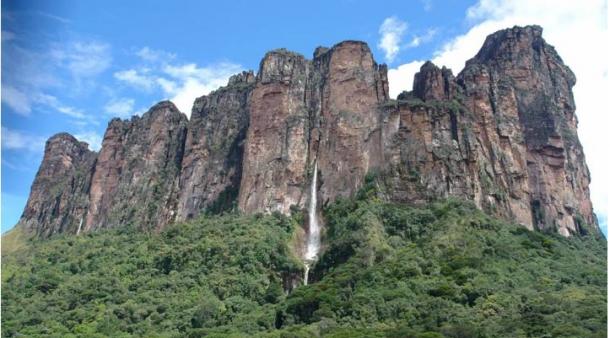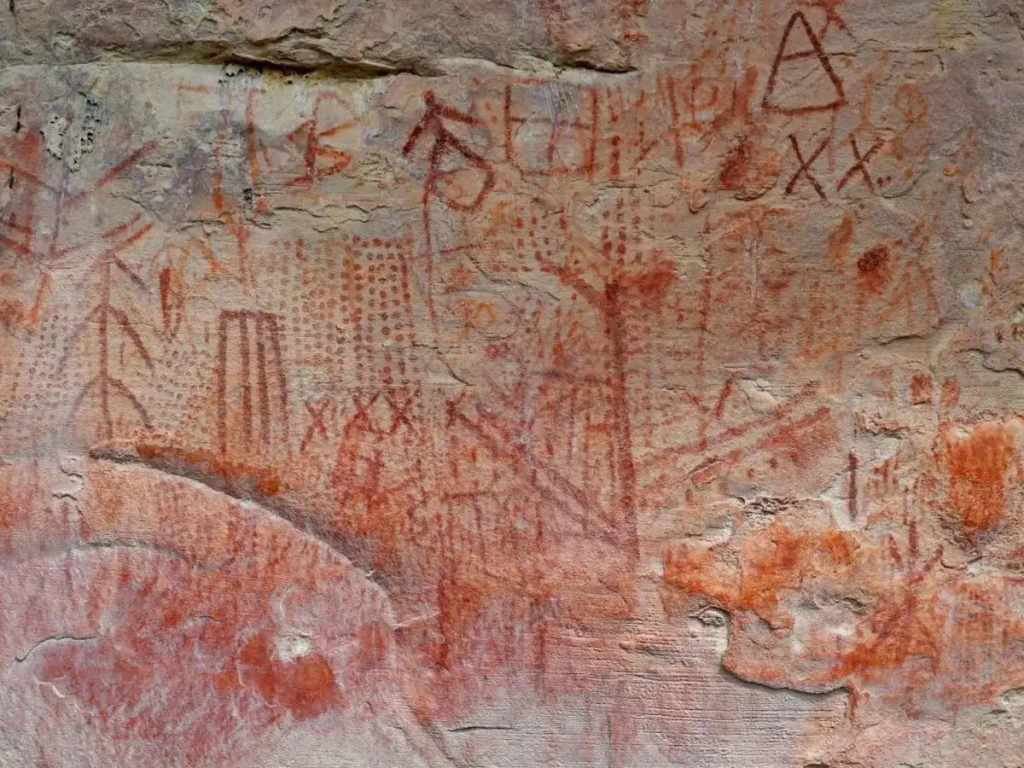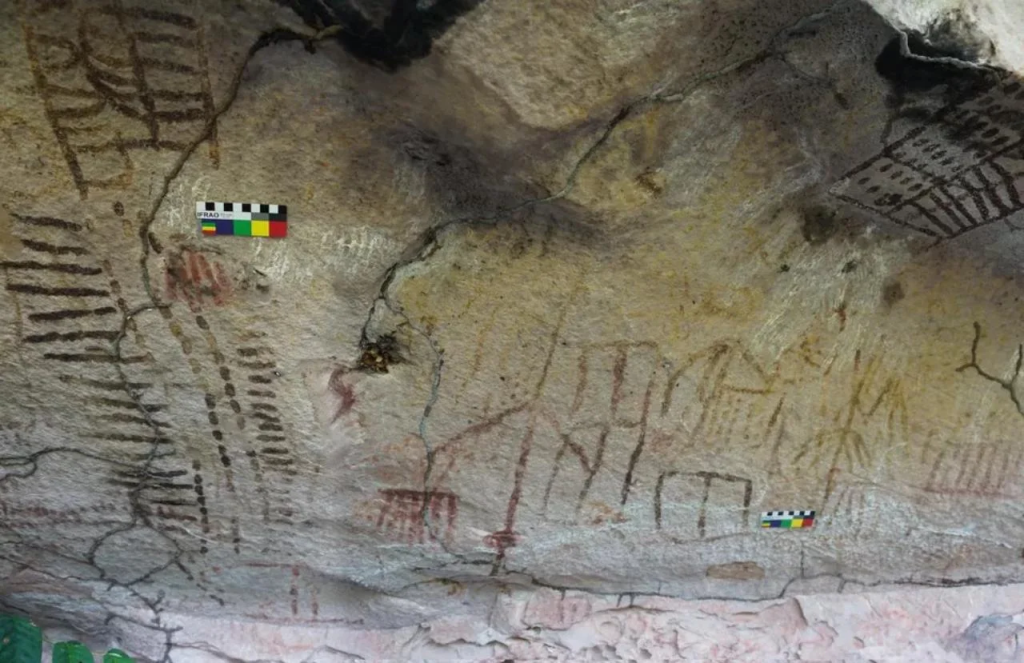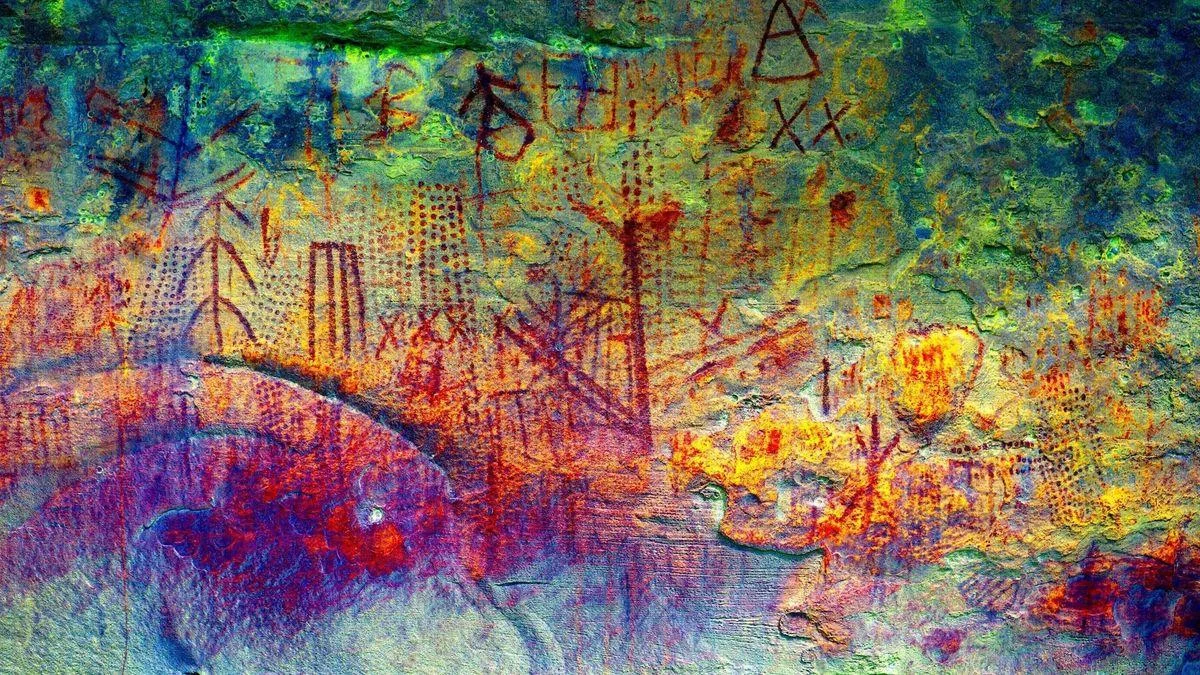4,000-year-old Rock Art From A Previously Unknown Ancient Culture uncovered in Venezuela
An archaeological team in Venezuela has uncovered 20 ancient rock art sites in Canaima National Park in the southeastern part of the country, consisting of both pictograms and petroglyphs, estimated to be about 4,000 years old.
This discovery reveals a previously unknown culture, even though similar rock art has been found elsewhere in South America
The newfound rock art, referred to as pictograms, was painted in red and featured geometric shapes such as dotted lines, rows of X’s, star-shaped patterns, and interconnected straight lines. Additionally, there are simple depictions of leaves and stick figure drawings of people. Some images, known as petroglyphs, were incised into the rock and exhibit similar geometric designs.
These paintings resemble other rock art from South America, such as that from Brazil, Colombia, and Guyana, but they also show the rise of a unique cultural group that was previously unknown.
An archaeologist and researcher at Simón Bolívar University in Caracas, José Miguel Pérez-Gómez told DailyMail.com that previous studies have found no signs of human activity in the region, suggesting the art was made by a previously unknown civilization.

The purpose behind this art remains unclear. The various representations could be associated with topics like childbirth, illness, nature reviving, or ethical hunting. Just as churches have great meaning for people today, the sites where the rock art was made probably had great significance for the surrounding environment.
“It is almost impossible to get into the minds of people living so many [thousands of] years ago” lead researcher José Miguel Pérez-Gómez, told Live Science over email. He added that “definitely these signs had a ritual meaning.”
Ceramic and stone tool remains were also discovered at the 20 rock art sites, possibly used by the artists themselves. However, Pérez-Gómez says more research is needed to confirm this. He also stated that more rock art sites are likely to be discovered in Canaima National Park as research continues.

Although it is not known precisely how old rock art is, similar rock art in Brazil has been dated to about 4,000 years ago, but Perez-Gomez believes the examples in Venezuela may be older.
The park might have been the original place where this unknown culture first developed, Perez-Gomez told Live Science, adding that they may have later dispersed to places as far away as the Amazon River, the Guianas, and even southern Colombia, which all feature rock art akin to the newly found sites in Venezuela.
The research was first presented at the “New Worlds New Ideas” prehistoric archaeological congress held in Valcamonica, Italy.

Cover Photo: An enhanced view showing some of the rock art discovered in Venezuela. Credit: José Miguel Pérez-Gómez

No comments:
Post a Comment